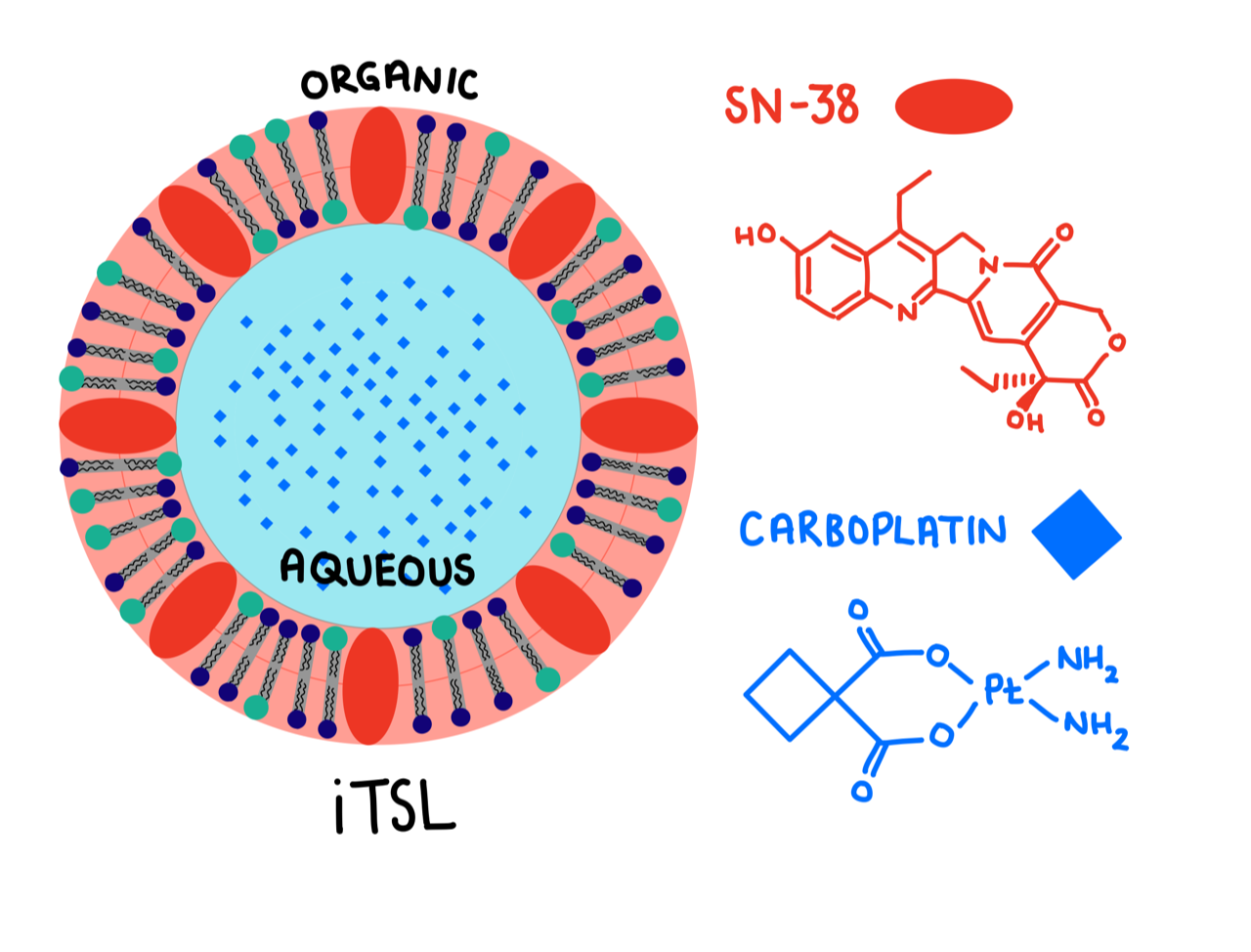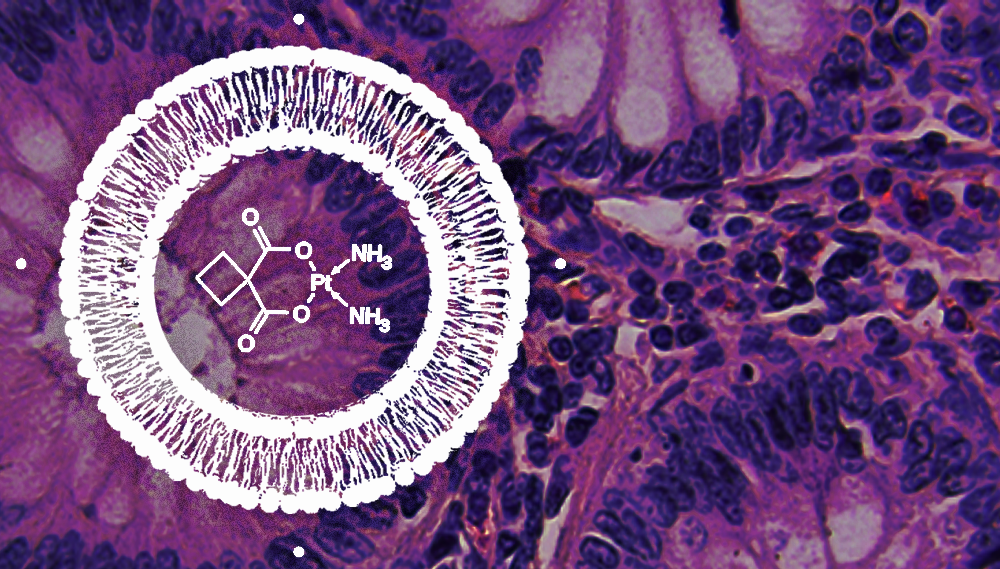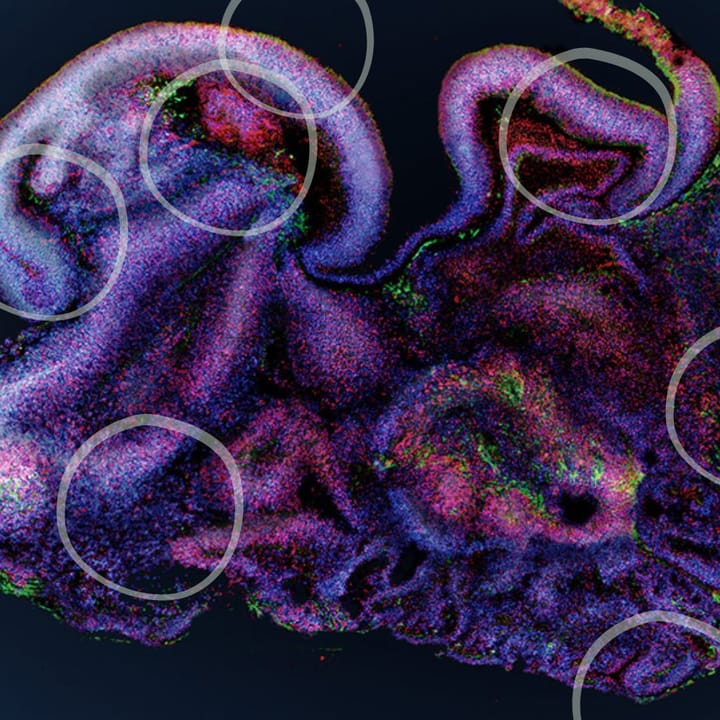(2/3) A research team at Kings College London have developed a novel image-guided nanoparticle-based cancer treatment for targeted drug delivery, in hopes of reducing patient suffering. By Mia Shepherd.
The second article of our November '23 feature on Cancer (2/3)
Researchers at King’s College London (KCL) have pioneered and patented a novel nanoparticular drug-delivery system. Their ‘image-guided thermosensitive liposomes’ (iTSL) are poised to begin clinical trials within two years. These liposomes (tiny artificial vesicles) are engineered at the nanoscale to respond to external stimuli like microwaves, ultrasound, and heat in order to release their contents. This technology can be used to deliver drugs more precisely than conventional formulations to improve survival rates and quality of life for cancer patients.
Currently, the best strategy to treat cancer is a combination of chemotherapy, surgery, and radiotherapy. The conventional administration of chemotherapy is intravenous, meaning the whole body is exposed to it. This is problematic as these drugs must be toxic enough to kill cancer cells, so when healthy tissues are exposed, serious systemic side effects ensue. These include susceptibility to infection, breathlessness, nausea, bruising, and kidney damage. Not only does this affect quality of life, it also limits the amount of the drug that can be administered, reducing its effectiveness. There is an obvious demand for more precise drug delivery systems.
One approach that several facilities are exploring is the integration of nanotechnology and imaging techniques to optimise drug delivery. One of the KCL researchers, Dr Thanou says that “other groups are using a laser that is limited to surface lesions”, whereas the imaging techniques used by her team can penetrate far deeper into the body. This allows the iTSLs to attack previously hard-to-reach tumours.

The image-guided thermosensitive liposomes (iTSLs) have been successfully engineered to recognise key tumour-specific characteristics, like leaky blood vessels, so they can directly target tumours. The researchers also incorporated gadolinium as an MRI contrast-enhancing agent to track their movement in the body. Once the liposomes have reached their target, external stimuli such as ultrasound are applied in brief intervals, triggering the release of any drugs encapsulated or attached to the liposome, as shown in Figure 1. Dr Thanou says, “100% of the drug can be delivered to its target site within a few seconds, eliminating dose-related toxicity”.
To avoid damaging healthy tissue, the iTSLs are designed to be short-lived in the body for quick removal after treatment has ended. This is important because the chemotherapeutic agents they are delivering are highly toxic to cells, so extended persistence in the body may have the same side effects as seen with conventional drug delivery.
An established pharmacological approach to improving chemotherapy outcomes is to deliver two drugs simultaneously, in hopes that a synergistic effect will improve outcomes. Therefore, the iTSLs have been engineered to deliver drugs with very different chemical structures and solubilities simultaneously. Dr Thanou’s team accomplished this by loading the highly aromatic chemotherapy drug SN-38 in the outer membrane with soluble carboplatin contained in the aqueous core of the iTSLs, as shown in Figure 1.
Whilst clinical trials are still two years away, Dr Thanou revealed in an interview that she is confident that this technology could have a “significant impact in treating cancer, and beyond”. They have observed significant antitumour effects in recent animal studies. She also said that if these effects can be replicated in early human trials, iTSLs may be approved via an accelerated pathway by the UK’s Medicines and Healthcare products Regulatory Agency.
Dr Thanou also predicts that the “biggest challenge will be communicating with pharmaceutical companies and regulators”. The norm for such companies is to develop either a drug or a medical device; rarely do researchers develop a technology that incorporates drugs, devices, and imaging. Approval may be further complicated by the existence of two different regulatory pathways for drugs versus devices. She anticipates “a lot of effort” will be required to communicate the advantages of her technology against the anticipated regulatory challenges. Dr Thanou’s commitment to the translation of nanotechnology research is evident from her role as the industry engagement trustee for the British Society for Nanomedicine, where she is actively engaged in enhancing academia-industry communication.
The iTSLs can successfully deliver multiple anti-cancer drugs in a targeted and controlled fashion. This technology holds real promise: by controlling the movement and release of the nanoparticle-drug conjugates, healthy tissue can be avoided, and a higher dosage is possible. This means that patients may soon receive more effective drugs with fewer side effects. Ultimately, KCL researchers hope to create a technique that could be applied to any disease treatment that would benefit from more targeted drug delivery, like inflammation, arthritis, and pain management.
References:
Cover Image: V. Rajavat, UCL Science Magazine Graphic Designer
- Chemotherapy, surgery and radiotherapy:
Bianchini, G., Balko, J., Mayer, I., Sanders, M., Gianni, L. (2016). ‘Triple-negative breast cancer: challenges and opportunities of a heterogeneous disease’, Nat. Rev. Clin. Oncol., 13, pp.674-690, DOI: 10.1038/nrclinonc.2016.66
- Synergistic effect:
Wang, H. and Huang, Y. (2020). ‘Combination therapy based on Nano Codelivery for overcoming cancer drug resistance’, Medicine in Drug Discovery, 6, p.100024. doi.org/10.1016/j.medidd.2020.100024
- Significant antitumour effects in recent animal studies:
Cressey, P., Amrahli, M., Po-Wah, S., Gedroyc, W., Wright, M. Thanou, M. (2021). ‘Image guided thermosensitive liposomes for focused ultrasound enhanced co-delivery of carboplatin and SN-38 against triple negative breast cancer in mice’, Biomaterials. 271. doi.org/10.1016/j.biomaterials.2021.120758





